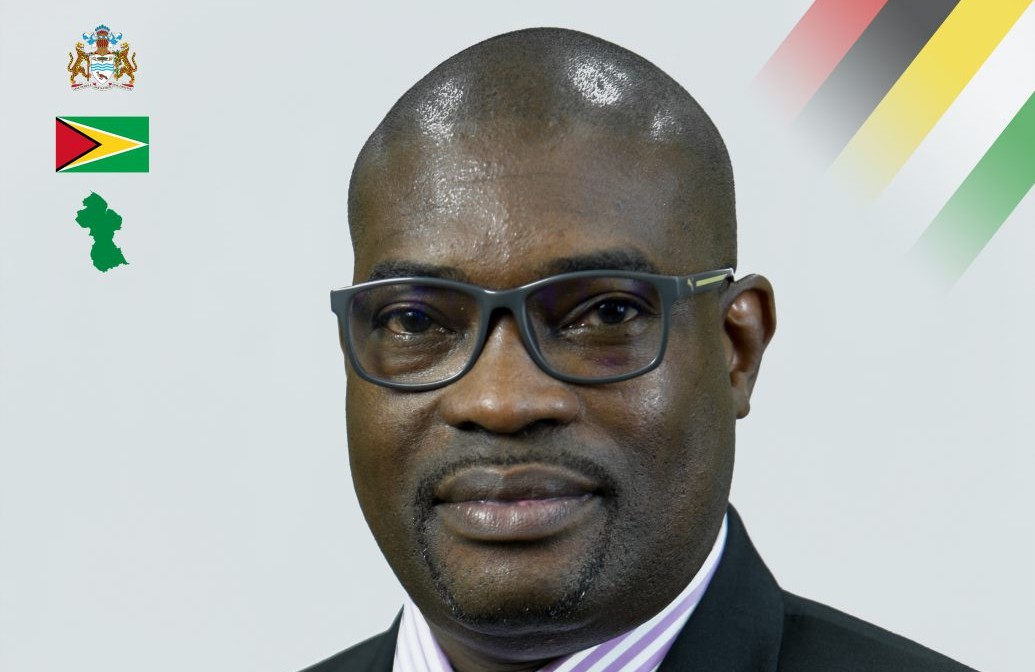Former Minister of Public Infrastructure and the Opposition’s shadow Minister of Oil and Gas David Patterson thinks that the government’s much touted gas-to-shore project is ill-conceived and if realized will not deliver what has been promised.
He made the comment on the sidelines of a picketing exercise at the offices of Environmental Protection Agency (EPA) in Sophia, Georgetown, on Friday. His comment comes even as the government and ExxonMobil have been engaged in preparatory works to get the project off the ground.
Government has already met with persons occupying land in the path of the pipeline and is discussing compensation and relocation, while Exxon has already awarded the contract for the construction of the pipeline. All of this is being done in the absence of an environmental permit which is yet to be issued by the EPA.
The pipeline is expected to be landed at Crane/Nouvelle Flanders, West Coast Demerara, and run to Wales on the West Bank of Demerara, where a natural gas liquids (NGL) processing plant and power plant are to be constructed. Exxon is responsible for the construction of the pipeline while it is the government’s task to construct the plant.
On Friday, Patterson posited that there was no basis for the gas-to-shore project since all of the studies were preliminary. He also said that it is quite surprising that both the government and ExxonMobil are working on the project in the absence of the studies and EPA approval.
“Generally I think the project is ill-conceived and I don’t think it will end up well. It should be another one of these harebrained schemes, a lot of money, committing our future and nothing. This is… almost like the Amaila Falls [hydro project]… the Amaila Falls has fallen through, yet they haven’t said stated anything about it. They haven’t revised [or] anything like that. So they’re just holding on to this project here without any studies and just trying to get it done for whatever reasons.”
The former minister opined that while he believes that the project would not be realised if it does come to par, then it would not be able to impact the quality of electricity delivered in Guyana. He contended that the government has not made tangible steps to improve the current grid and has regressed on all of the progress made by the APNU+AFC government.
“The Wales gas-to-shore project that they’re touting to be the end of our [blackouts], that’s not true. All that is just…, if it ever finishes, is only addressing one part of the whole scenario. [That is if it gets] completed and I have my doubts.
“You will have some generating sets over in Wales, but there’s no linkage to our power system. There has been no tender out, there has been no idea how you’re going to get [power] from Wales to where our load centres [are] in Georgetown, in Region Four, Region Five, and so forth. The last time they try bringing electricity from Region Three they put down submarine cable which you know, that goes down once a year and will continue going down once a year.”
He remarked that the government has not shown any new plan on how it intends to improve the existing electricity infrastructure, warning that “…we are in for a long period of power outage because nothing new has been done and they are depending on this Wales project like it is their silver bullet and that’s even if it gets completed.”
The project involves capturing associated gas produced from crude oil production operations on the Liza Phase 1 (Destiny), and Liza Phase 2 (Unity), Floating, Production, Storage, and Offloading (FPSO) vessels.
Some 150 acres of land at Wales have been allocated for the project, which is expected to cut power costs by 50 per cent. The government’s power plant is expected to utilise ‘dry gas’ for electricity generation.
The pipeline project aims to employ approximately 800 workers during the peak construction stage and 40 full-time workers during the operation phase.
It will be executed in three phases – construction, operation, and decommissioning. It entails three aspects as well – an offshore pipeline which is approximately 220 kilometres of a subsea pipeline extending from new subsea tie-ins at the Destiny and Unity FPSOs in the Stabroek Block, to the proposed shore landing located approximately 3.5 kilometres west of the mouth of the Demerara River; an onshore pipeline that is a continuation of the offshore line and extends about 25 kilometres from the landing site to the natural gas liquids (NGL) plant; and the NGL plant and associated infrastructure that will be located about 23 kilometres upstream from the mouth of the Demerara River on the west bank.
Both the Destiny and Unity FPSOs have pre-installed facilities to allow for the export of the associated gas with crude production.
At the end of July, ExxonMobil announced that it made a contingent award of the contract for the construction of the pipeline.
The consortium of Subsea 7 and Van Oord, announced that it has received a “substantial” contract from ExxonMobil affiliate, Esso Exploration and Production Guyana Limited (EEPGL), for the gas-to-shore project. Subsea 7 said that it considers a “substantial” contract to be in the vicinity of US$150–300 million.
The company informed that the scope of the contract covers the project management, engineering, and installation of approximately 190 kilometres of pipeline, with an associated shallow water portion and onshore approach making landfall to the west of the Demerara River, along the coast of Guyana.






